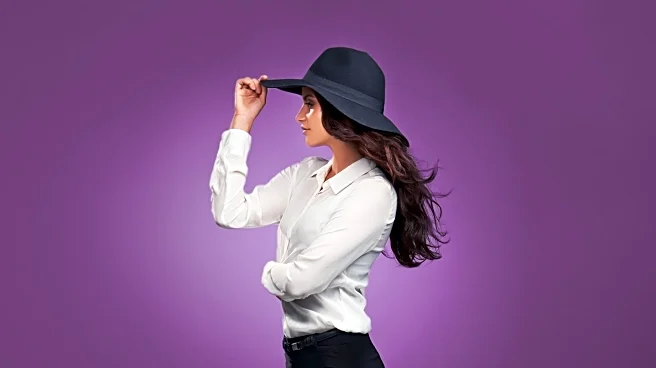What's Happening?
Swimwear designers are witnessing a shift in consumer preferences towards smaller bikini bottoms, particularly thongs. This trend has been observed on popular TV shows like 'Bachelor in Paradise' and 'Love Island,' and is reflected in increased searches for 'Love Island bikini' on Google. Designers such as Hayley Sagar of Onewith swimwear and Elizabeth Claire Taylor of Curvy Beach have adapted their offerings to meet this demand. Sagar modified her designs to include more revealing options, while Taylor introduced a cheeky cut and later a thong, which quickly sold out. The trend is seen as a form of body autonomy, with some women finding less coverage more flattering.
Why It's Important?
The shift towards smaller bikini bottoms highlights changing societal norms around body image and fashion. It reflects a broader cultural movement towards body autonomy and self-expression, challenging traditional notions of modesty. This trend could influence the swimwear industry, prompting more brands to offer diverse styles that cater to varying consumer preferences. It also raises questions about the economic implications, such as whether smaller designs are a result of 'shrinkflation,' although experts like Edgar Dworsky doubt significant cost savings. The trend may also impact discussions around body positivity and inclusivity in fashion.
What's Next?
As demand for smaller bikini bottoms continues, swimwear brands may further diversify their offerings to include a wider range of styles and sizes. This could lead to increased competition among brands to capture the evolving market. Additionally, the trend may spark further debate on body image and fashion standards, potentially influencing other sectors of the fashion industry. Designers might explore innovative ways to balance consumer desires for both style and comfort, while addressing concerns about body exposure in public settings.
Beyond the Headlines
The trend towards smaller bikini bottoms could have deeper cultural implications, challenging conservative views on women's fashion and body exposure. It may also reflect a pushback against patriarchal standards that dictate what is considered appropriate or flattering. This shift could contribute to broader discussions on gender equality and the empowerment of women through fashion choices. Additionally, the trend might influence global fashion trends, as U.S. swimwear styles gain popularity internationally.











